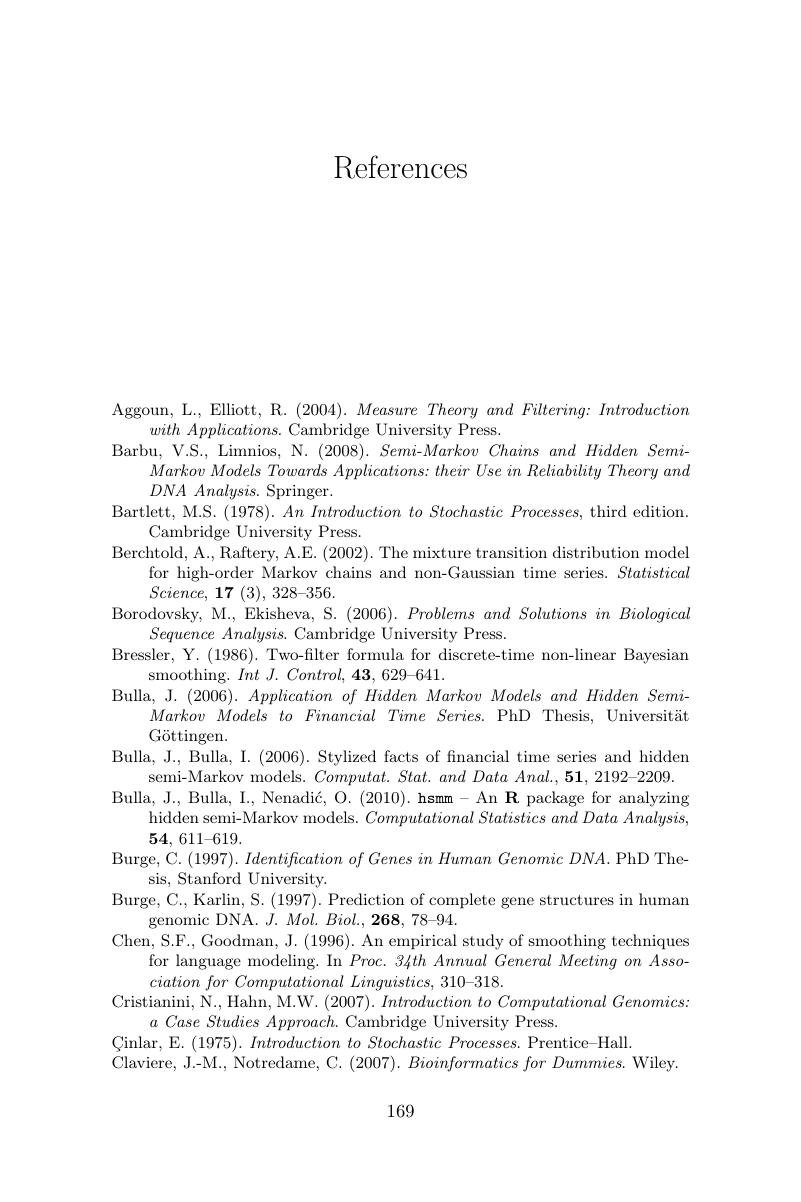Book contents
- Frontmatter
- Contents
- Preface
- 1 Observed Markov Chains
- 2 Estimation of an Observed Markov Chain
- 3 Hidden Markov Models
- 4 Filters and Smoothers
- 5 The Viterbi Algorithm
- 6 The EM Algorithm
- 7 A New Markov Chain Model
- 8 Semi-Markov Models
- 9 Hidden Semi-Markov Models
- 10 Filters for Hidden Semi-Markov Models
- Appendix A Higher-Order Chains
- Appendix B An Example of a Second-Order Chain
- Appendix C A Conditional Bayes Theorem
- Appendix D On Conditional Expectations
- Appendix E Some Molecular Biology
- Appendix F Earlier Applications of HiddenMarkov Chain Models
- References
- Index
- References
References
Published online by Cambridge University Press: 01 February 2018
- Frontmatter
- Contents
- Preface
- 1 Observed Markov Chains
- 2 Estimation of an Observed Markov Chain
- 3 Hidden Markov Models
- 4 Filters and Smoothers
- 5 The Viterbi Algorithm
- 6 The EM Algorithm
- 7 A New Markov Chain Model
- 8 Semi-Markov Models
- 9 Hidden Semi-Markov Models
- 10 Filters for Hidden Semi-Markov Models
- Appendix A Higher-Order Chains
- Appendix B An Example of a Second-Order Chain
- Appendix C A Conditional Bayes Theorem
- Appendix D On Conditional Expectations
- Appendix E Some Molecular Biology
- Appendix F Earlier Applications of HiddenMarkov Chain Models
- References
- Index
- References
Summary

Information
- Type
- Chapter
- Information
- Introduction to Hidden Semi-Markov Models , pp. 169 - 172Publisher: Cambridge University PressPrint publication year: 2018
